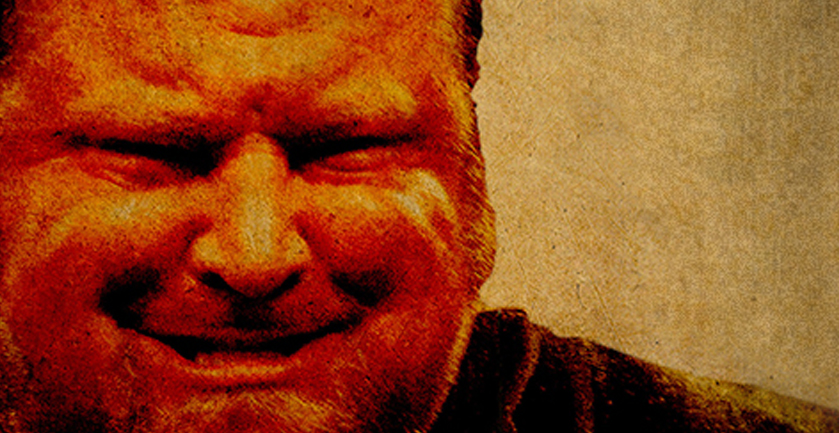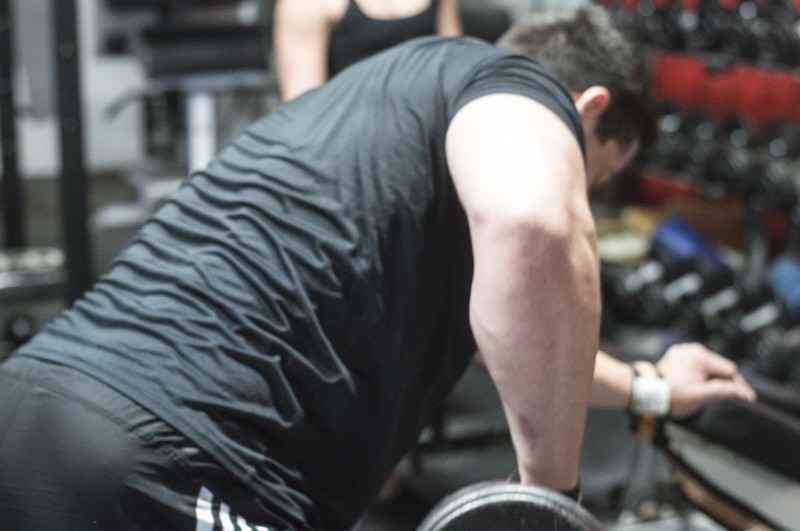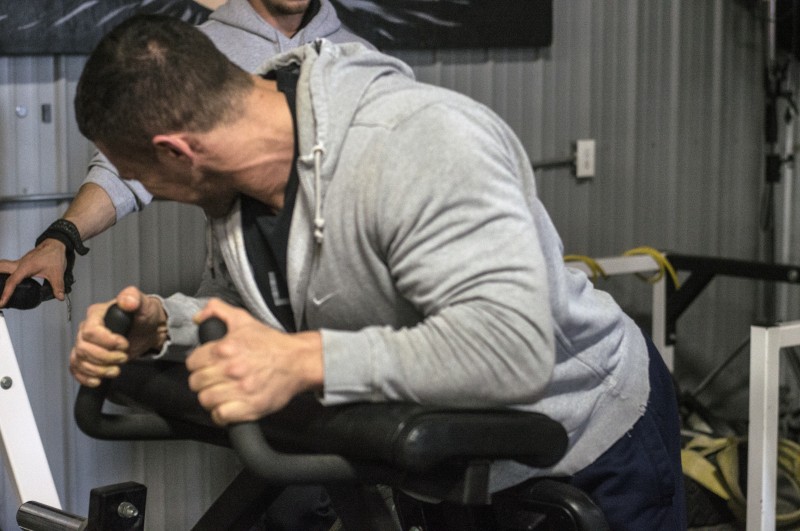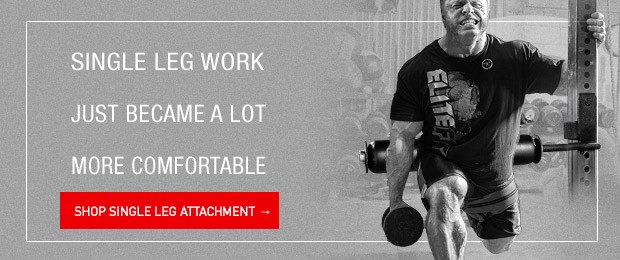
Albert Einstein once said, “If you can’t explain it simply, you do not understand it well enough.”
Do you ever get those nagging injuries that just do not seem to ever fully heal? Ones where you try various modalities and rehab exercises with some success, but the results are short-lived before that injury acts up again? I have recently been dealing with a back injury just like that. Eventually, I realized I was looking at it all wrong. I needed to simplify the way I was thinking about it, or maybe see it from a different angle. Unilateral movements suddenly became clear to me as the solution to this nagging problem.
With my past experience in physical therapy and sports, I know a lot of recurring injuries are caused by imbalances of the muscles in a joint. This is a very simple and easy to understand concept. A joint is designed to work based on equal strength in all the directions it has mobility in. If the muscles that pull in one direction become stronger or weaker without the opposing muscle doing the same then everything gets out of whack. The joint will not be balanced like it was designed and everything starts to wear in bad ways. This then puts undue stress on articular cartilage, tendons, ligaments, and the other muscles. You can try to heal the damage being done to this area, but as soon as you are healed and get back to your daily grind, the injury will just keep reoccurring. This is because you only healed injured parts but did not solve the problem or fix why the injury happened in the first place.
RECENT: Team or Dysfunctional Family? Stories of an Elite Lifting Group
Some joints are obviously more complicated than others. The knee is pretty basic, while the shoulder is much more complicated. This is simply because of the mobility of the joint and all the extra muscles, ligaments, and tendons that have to be involved to perform all the ways it can move.
I still see the back as the collection of the most complicated joints. It consists of 33 total vertebrae: seven cervical, 12 thoracic, and five lumbar. There are also five fused sacral and four fused coccygeal vertebrae. All of these joints have intervertebral disc and ligaments, not to mention more muscles and tendons than I want to take the time to type out. This is also the main thoroughfare of communication for the body (nerves). To say it mildly, there is a shit ton going on back there. Anyone who has ever seriously injured their back can testify to how much the back is involved in almost every movement of the body. Even the simplest of tasks becomes painful and difficult with an injured back. No matter the complexity of the joint, they are all designed with a certain balance to them in order to keep them healthy and functioning well.
I think for strength athletes and especially powerlifters, it is easy to forget about the importance of balanced joints. In powerlifting especially, our goal is to be the strongest we can in the three main lifts. We tend to think in terms of what muscles or groups will make us stronger in those lifts. Have you ever heard a powerlifter say he needs to strengthen his infraspinatus to get his bench up? I feel we also have a tendency to want to use barbells instead of dumbbells. I know I have the urge to want to do the main lifts too much and to do every exercise to failure.
The fact of the matter is that we have to look at the body as a whole, just like we should be looking at training as a whole. It is the sum of many parts, and each of those parts has a crucial role. It is easy to give training in the gym all the focus, but recovery outside of it is just as important. Quality sleep plays the same role as quality training — both are very important. This article is no different. Who wants to read about unilateral movements when you could be reading about some new intense training program? I hate doing recovery, rehab, and unilateral movements. I don't much like writing about them either, but if it were not for them, my strength progress would be extremely slow at best, if not stopped altogether. This is because I would continue to be stuck in that cycle of one or two good sessions followed by a month of bad ones because of my back.
As powerlifters, most of our training exercises use heavy weights and are bilateral movements. Now, this is great for building the major muscle groups. What it generally does not strengthen is the smaller stabilizer muscle groups or antagonistic muscle groups. In the shoulder, for instance, we tend to think of traps, deltoids, and pecs. These are the muscle we see flex and the ones we see in the mirror. We tend to not think much about all the smaller muscles involved in keeping the shoulders healthy and balanced. The rotator cuff muscles and the rear delts, for example. Maybe they do not help so much in pushing a big bench, but they do help in keeping us injury-free and healthy so we can keep benching those big weights.
I think there is also a misconception sometimes that these smaller muscles must be getting worked with the movement as well as the big ones. Our major muscle groups can be so strong they can adapt past these smaller groups to some extent, but those smaller muscles are there for a reason. I have seen many therapists frustrated with strong patients because the strong patients' major muscle groups are strong enough to throw off the therapist test to see which smaller muscles are injured. To strengthen these smaller groups it takes more isolated movements and much lighter weights.
We also have to remember that bilateral movements are much easier for the body to stabilize. Take the bench press for instance: it is much easier for the shoulder to stabilize with a barbell than dumbbells. Do one side at a time and it is even more so. The same holds true with squats; it is much harder for the hip to stabilize in a unilateral squat then bilateral one. Basically, the smaller stabilizers get worked way more in unilateral movements. We can take advantage of this concept to help keep these muscles strong.
Simply put, our muscles and joints were designed the way they are for a reason. Maybe by God, through evolution, or however you want to see it, but they are like this for a reason. Their length, size, and attachment placements (origins and insertions) are all for a reason. The muscles around the joint work as a whole. If we work one more than the other, the joint will not be balanced. If we work the major muscle groups to support way more weight but do not work the stabilizers to keep up with it, something will eventually give.
The bench press works the anterior delts a lot, which will get stronger. If you do not make sure to work your rear delts just as much, you will develop an imbalance. Your shoulder will begin to pull more anterior, which will throw the whole joint out of whack and will eventually lead to pain, or worse, an injury. In squats, if we always work bilateral and never work on the stabilizers of the hips, we are asking for something to go wrong. Think about it, how often in our lives do we use one leg at a time? When we walk, run, or sometimes jump, we are pushing off one leg. We don't hop around like bunnies everywhere.
Another consideration—and where this has really come to my attention most recently—is when we have injuries. We are so strong and so stubborn that most of the time we do not want to stop training or we take as little time as possible off. We tend to work around injuries and end up adapting. We end up asking our major muscle groups to take over the jobs of stabilizing because they can. All we end up doing is creating an imbalance, and over time, a muscle weakness. We may be able to get by for a while like this but eventually, the weights will find that weak point. It was the case in my back, which I talked about earlier. I injured it but kept working it. While it got better, I had already taught my body to adapt around it. The muscle was never getting worked or stronger. I developed a major imbalance and a weak point, which would get too much stress when the weight got heavy again. I was caught in the circle of healing the same injury but not fixing the problem.
MORE: Multi-Level Single Leg Squat Progressions
Unilateral movements are not anything complicated; in fact, it is a pretty simple idea, but it is the one that is helping me get out of this infernal loop. Incorporating them into my training was also not complicated. I just switched my recovery sessions to mostly unilateral movements. It was even a lot of the same exercises, just unilaterally. So instead of light high-rep bilateral good mornings, I started doing one-leg good mornings. Instead of light high-rep squats, I started doing one-leg squats. When I first started doing these, I admit I was surprised. I usually do my recovery work at 30 reps or more with bands or a lightly loaded barbell. The first time I did one-legged straight leg deadlifts with just 25-pound dumbbells, I was only able to get ten reps before my hips and glutes were just shaking. Even my back was screaming at me.
After my first session I realized this is something I have obviously been missing. I am keeping the exercises very simple, always being conscious of trying to keep the joint straight and stable. I do squats, good mornings, straight leg deads, bridges (off bench and floor), and step-ups (stepping down on the side and stepping up), all one-legged. I have also just recently started doing this with my bench recovery training because of shoulder issues. Again, I just do the regular exercises with dumbbells and unilaterally. My shoulders already seem to be responding well and feeling better.
On a side note, I have also begun riding my BMX bike a lot more and was thinking about how this could be considered a unilateral movement at well. When you’re pushing with one leg the other is lifting, and vice versa. This tracks up through the whole body; each side is working opposite of the other, from the hips to the back and even up to the shoulders. When I am riding fast, I shift the bike with my shoulders. Once side is pushing down while the other is pulling up. Now, that is not as much stabilizing of the smaller muscle groups as in a truly unilateral movement, but I still believe it is helping the process. So, unilateral training does not need to be held to the gym to help fix imbalances.
Not everything has to be complicated, and most things are pretty simple if you just try to see through the bullshit. The body has a natural balance, and as we build our bodies to be even stronger we need to keep that in mind. If you work a protagonist muscle, make sure you're working the antagonistic one, too. When you're working major muscle groups, take the time to remember and work all the other smaller ones underneath them, too. We need to see strength training as many parts that make up a whole. All the parts have crucial roles, because if any of them are weak, it makes the whole weaker, too.













1 Comment